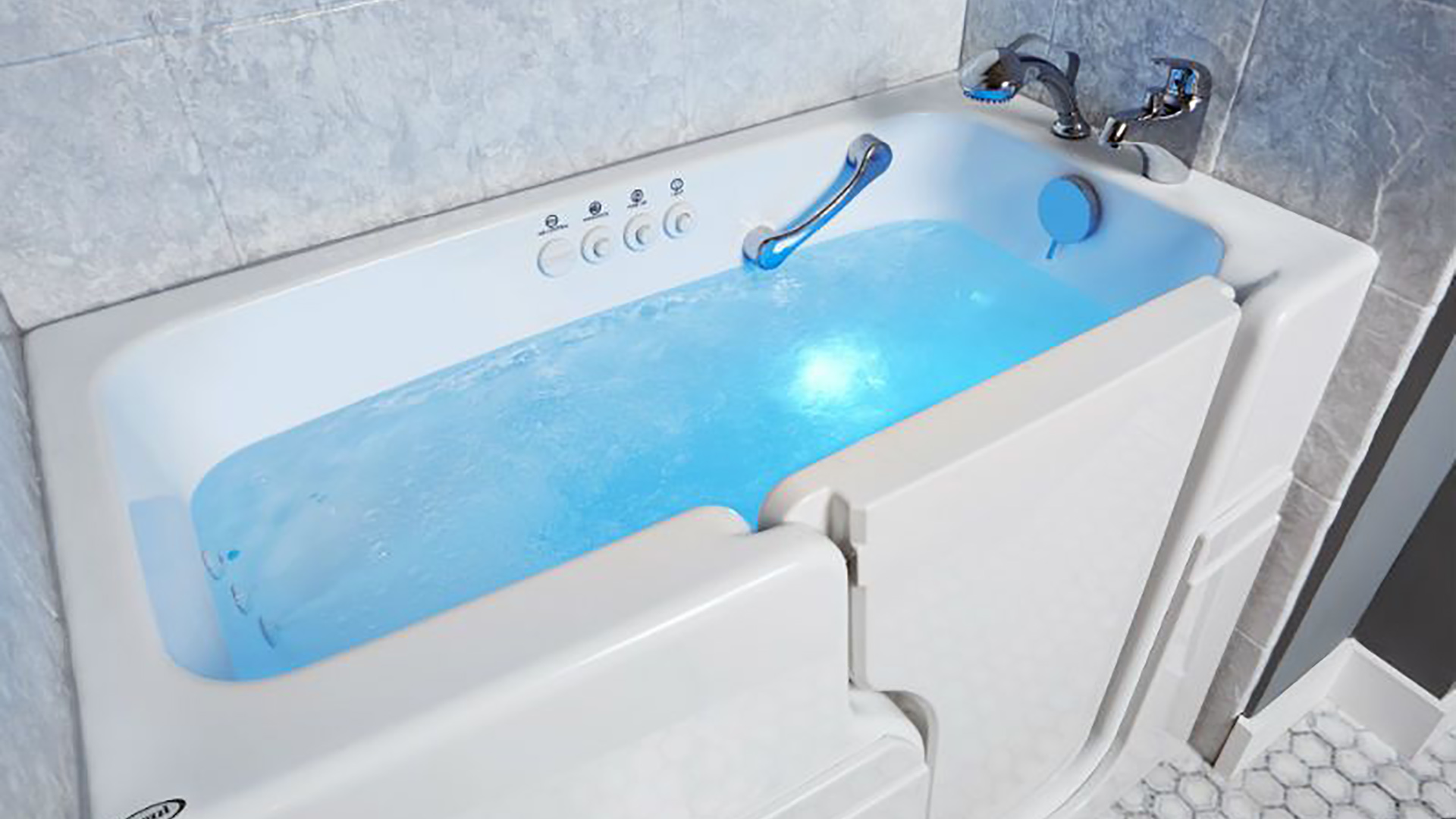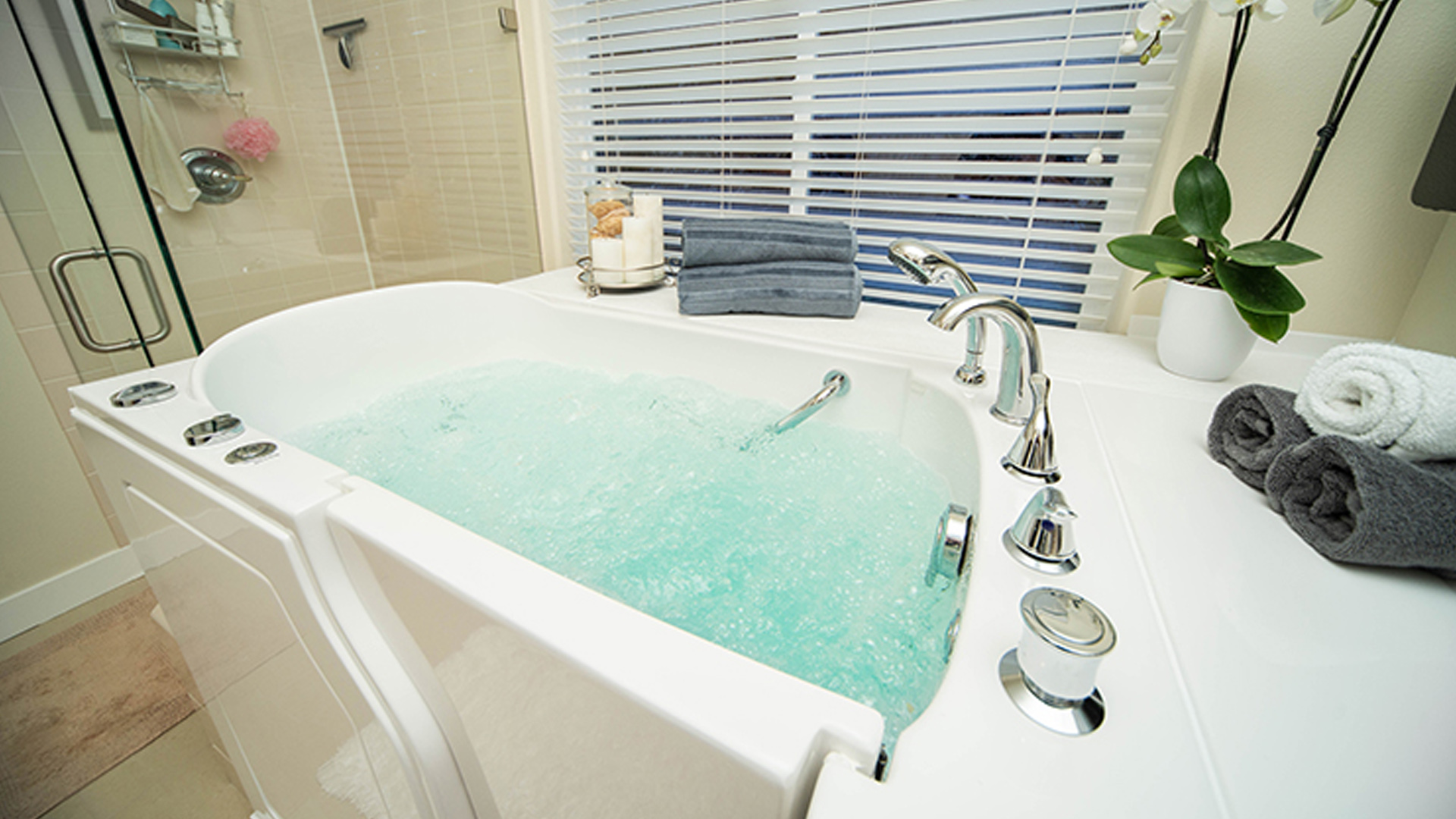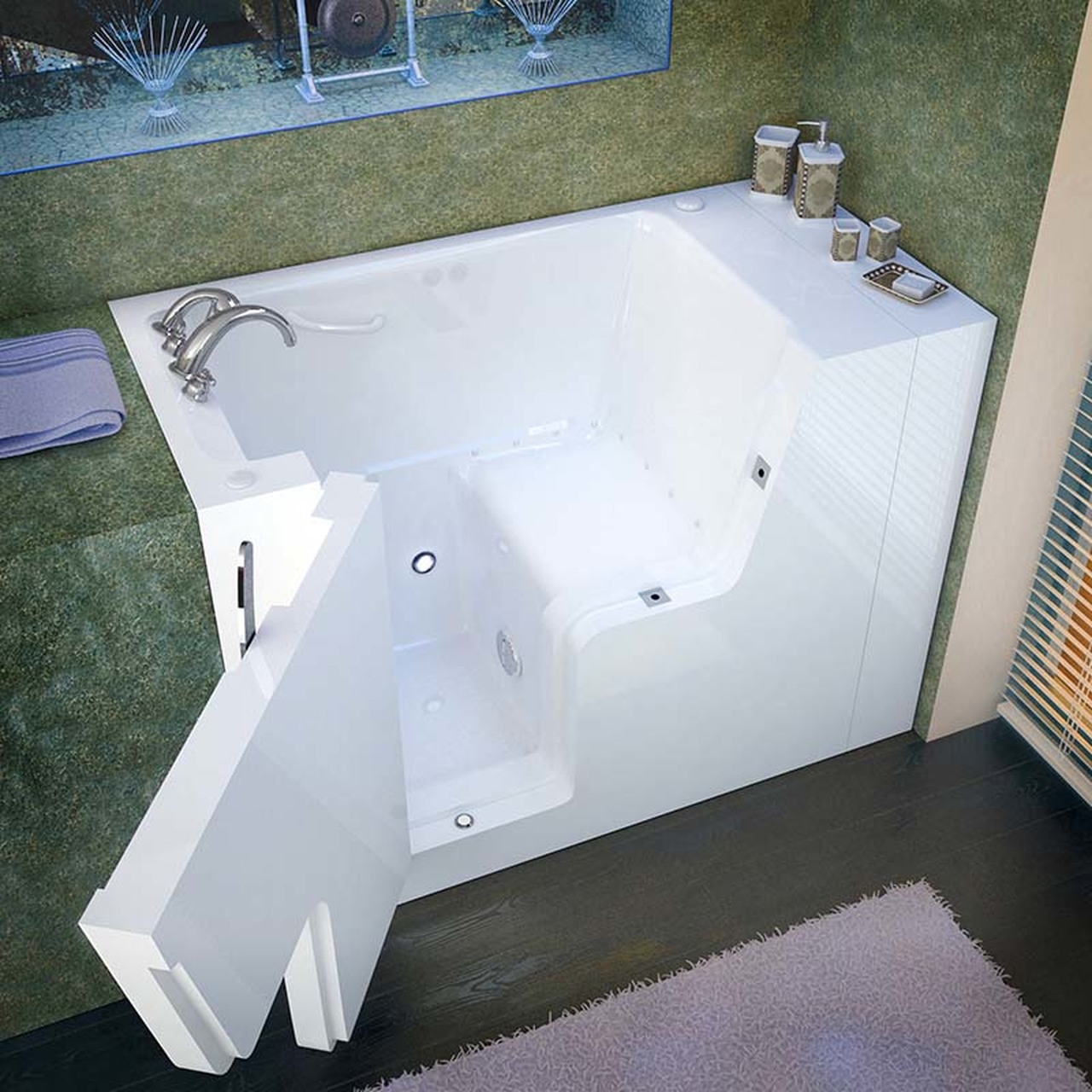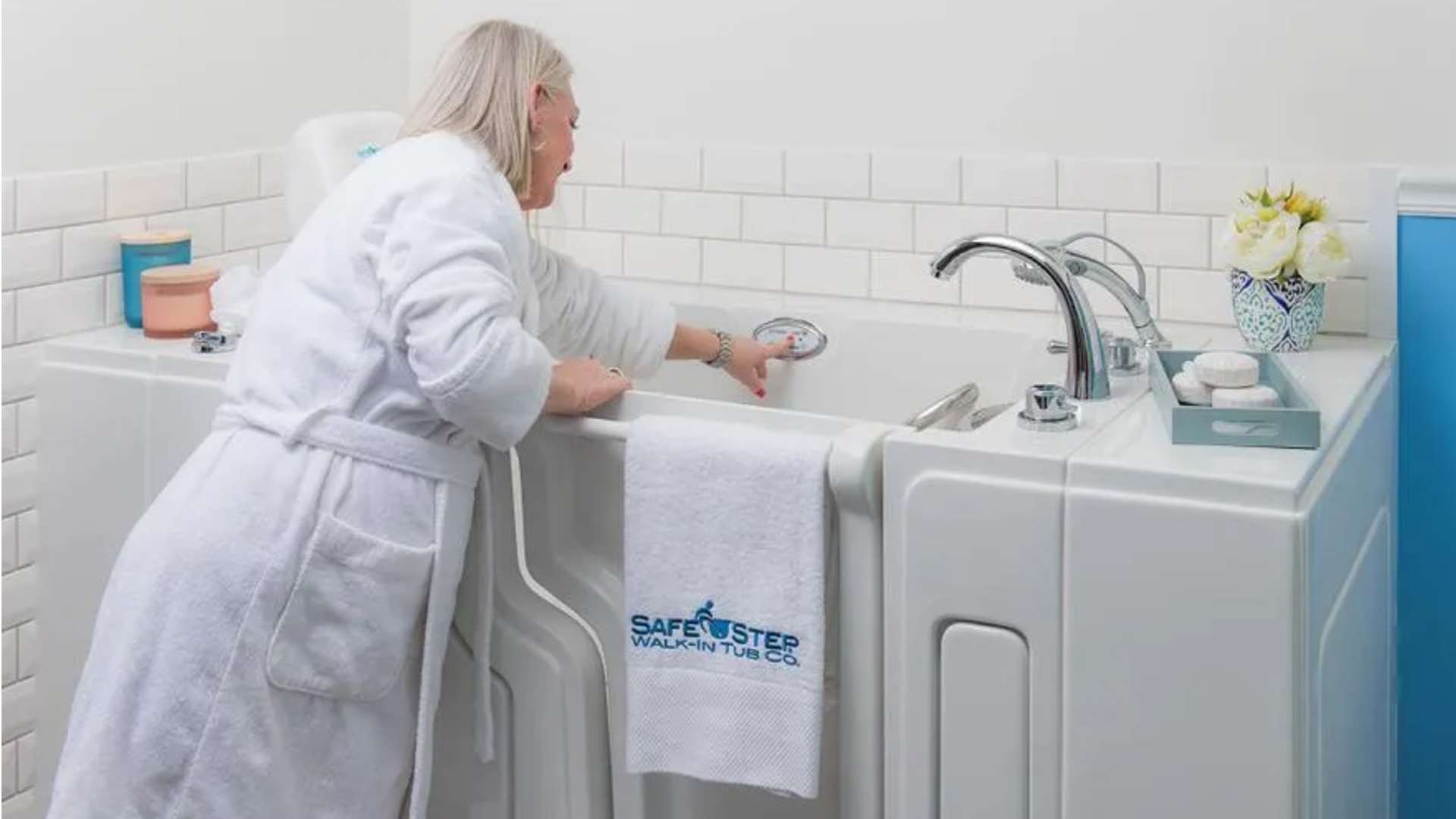How we evaluate the best walk-in tubs
Taking a close look at the best walk-in tub designs, materials, costs and warranties

To find the best walk-in tubs, we would love to say that we spent 60 hours bathing in each and every tub we reviewed. Who wouldn’t want to get paid to relax in a bath with a glass of red wine, a block of brie and a computer (on a bathtub tray, of course)? But alas, buying, installing and testing walk-in tubs is simply not feasible for a review. Instead, we spent 60 hours researching and consulting with senior care experts and professionals to evaluate what makes the best walk-in tubs for seniors.
Since the best walk-in tubs are really a matter of preference and therapeutic needs, we also haven’t sought out to review every walk-in tub available. Instead, our focus is to evaluate specific models, types, features and manufacturers that are easily accessible to seniors. In other words, we evaluated the most common, most highly rated, and most universal (in terms of the fit) walk-in tubs.
- The best walk-In tub brands of 2020
Walk-in tub design
While many people may not appreciate the little details that go into a design, it doesn’t mean the details don’t impact how well a walk-in tub performs. From the angle of the seat to the height and swing of the door, the best walk-in tubs have design features with a purpose. If there are controls for the jets, are they easy to use, easy to understand and is the motor and electrical equipment easy to access? We evaluated how much clearance the step-up curb was and how the seat area was designed for access and comfort.

Most walk-in tubs are designed to fit into a standard tub space or alcove, which is usually between 50 and 70 inches long and 30 to 34 inches wide. Certainly there are walk-in tubs that exist outside of these parameters, but these measurements are considered universal. However, don’t let the universal term fool you. A 70 inch tub does not fit into a 50 inch space.
We looked at user reviews to evaluate the placement and design of the door, the efficacy of the door seals, the faucet and jet placements, and the overall satisfaction. User reviews alone don’t get the whole picture, but they can help identify common issues in a feature, like a leaky door seal or poorly placed jets.
Walk-in tub material
The material of a walk-in bathtub matters for several reasons - durability, insulation, and weight. You want a material that’ll hold up over the years, keeps the water warm and weighs as little as possible, because when you add 60 gallons of water, it’s going to weigh over 500 pounds. Many floors are not designed to handle this type of weight.
Acrylic
Acrylic is the preferred material for luxury walk-in tubs because it’s lightweight and durable with an expected life of over 30 years. It also insulates well. But it’s expensive.
Are you a pro? Subscribe to our newsletter
Sign up to the TechRadar Pro newsletter to get all the top news, opinion, features and guidance your business needs to succeed!
Fiberglass
Most walk-in tubs are made of fiberglass with a gel coating. This makes them inexpensive, but they don’t last long and the porous surface of the gel makes it difficult to keep clean. You can expect a fiberglass walk-in tub to last only eight years. They also don’t have great insulative properties.

Porcelain
Porcelain is a very common material for regular bathtubs because it's easy to clean because of the hard, smooth surface. They are also durable, though they can crack. But porcelain is also very expensive and heavy, making it rarely used as a walk-in tub.
Cast-Iron Steel
A regular cast-iron tub weighs over 400 pounds without water, but it continues to be a premium material for bathtubs because of the insulative properties of steel and the durability. A cast-iron tub can last over 100 years. However, the weight is the main issue, making it a rare and expensive material for a walk-in tub.
Walk-in tub costs
Standard features in pretty much every walk-in tub are grab bars and rails, non-slip surfaces, and handshowers. Typically, a walk-in tub has a specific shape and design and starts out as the basic soaker tub. This is the most affordable option, but you can add features at an additional cost to the tub. In addition to evaluating the performance and quality of these features, we considered the basic cost of a specific model and how much adding features, like hydrotherapy water jets added to the tub.
Soakers: $2,000 to $3,000
We looked at the shape of the seat and whether it's a lounger type of soaker tub. We considered the material, preferring acrylic for it’s lightweight and durability but this makes the tub more expensive than fiberglass.
Hydrotherapy: $1,500 yo $7,000+
The cheaper models are made of fiberglass and don’t tend to have the best user ratings with concern to the maintenance and cleanliness. Make sure you look for models with self-cleaning features. Otherwise, you risk developing fowl-smelling bacteria.

Air Jet: $2,000 to $7,500+ Similar to the hydrotherapy model, the air jet doesn't require as much maintenance or cleaning, but this comes at an extra cost. Air jets are excellent for getting a relaxing, exfoliating massage that's gentle on the skin.
Chromotherapy: This feature includes lights that shine various colors, typically at the bottom or the side of the tub. Markers claim the colors help you relax by setting the mood. This option usually adds about $1,000 to your price.
Aromatherapy: Many people love essential oils and claim it helps them relax. These features add these oils to your bath for a more spa-like experience. That said, expect to pay between $500 and $1,000 extra for aromatherapy. And don't be surprised if the tub is only "compatible" with the brand's own essential oils.
Combination Walk-in Tubs: $2300 to $10,000+ These walk-in tubs have all the features: Air jets, waterjets, lights, high-end brass faucets. Again, material plays a major role in the price. An acrylic walk-in tub will cost you more but it lasts a lot longer than a fiberglass one.
Walk-in tub installation
The most stressful part of buying a walk-in tub is figuring out how to install it. Keep in mind, these tubs are big, heavy, and complicated. When full of water, the tubs can reach nearly 1,000 pounds. This might require additional support in your home. Also, most walk-in bathtubs have motors that require complex electrical work, not to mention plumbing and carpentry. It's not for the fainthearted.
To mitigate this, the best manufactures include installation as part of the purchase. They provide the professionals and experts who come to your home and remove your old tub, install the new one, and even train you how to use it.

Of course, when a manufacturer includes installation, it means the cost of the tub is much higher than one where installation is not included. In many cases, the cost of an installation is as much as the cost of the tub. It all depends on the amount of work required.
Also, during the corona pandemic, we've looked into how the company has responded, whether they include virtual consultations and no-contact installations.
Walk-in tub warranty
When you’re spending thousands dollars on a bathtub, you want to make sure you protect your investment with a good warranty. As such, we poured over the warranties and preferred bathtubs with longer warranties.
The best manufacturers provide lifetime warranties on all components of the tub, from the shell to the motors. That said, the industry average is 10 to 15 years for the shell, one to five years for the motor and electrical components, and a lifetime warranty on the door seal.

It’s important to note whether the warranty requires a professional installation. Most manufacturers won’t honor a claim if the tub wasn’t installed by a professional. And you can’t blame them. Installing a walk-in tub is a complicated task that requires experience and knowledge that the typical DIYer doesn’t have. We don’t recommend anyone try doing themselves.
Warranties also don't pass on to new owners or new locations. If you sell your house or decide to move the walk-in tub to a new house or a new location in your house, then you void the warranty. Even if you are just moving the walk-in tub's location in the same bathroom, you void the warranty.
The Best of the Best
After all of our research, it's clear that the best walk-in bathtubs are made of a quality acrylic material, are designed to fit in your existing bathtub alcove, feature the type of hydrotherapy options you want, and have the installation included. Obviously price is a consideration, but don't skimp out on a cheap tub with no installation, as you may find it costing more in the long run.
- The best walk-In tub brands of 2020
Jeph Preece is an ambitiously creative writer, editor, and content strategist with over seven years of digital publishing experience and five years teaching and admin experience in academia. He is specialized in short-form and long-form, purpose-driven content. Jeph is also an accomplished artist, musician, and author of innovative fiction.
